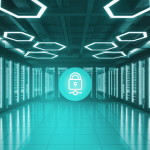AI in Cybersecurity: How Hackers Use AI to Attack Your Business
Running a business today means juggling a lot—customers, operations, cashflow, and now, cyber threats powered by artificial intelligence.
Hackers are increasingly using AI in cybersecurity to carry out smarter, faster, and more convincing attacks. These aren’t the old-school scams we’re used to. They’re automated, adaptive, and disturbingly real.
The good news? Understanding how AI is used in attacks can help you stay one step ahead. This guide explains how cybercriminals use AI, what risks it creates for your business, and how you can use the same technology to strengthen your defences.
Why AI in Cybersecurity Matters for NZ Businesses
AI is changing the entire cybersecurity landscape. In New Zealand, small and medium-sized businesses are just as at risk as large corporations.
With AI in cybersecurity, attackers can:
-
Create deepfakes that trick employees.
-
Crack passwords in seconds.
-
Find and exploit weaknesses automatically.
-
Launch thousands of personalised phishing attacks at once.
If your team isn’t aware of these tactics, one small mistake can open the door to serious data loss or financial damage.
1. Deepfakes: When AI Makes Fake Look Real
AI can now generate highly convincing fake videos and audio clips—known as deepfakes. Hackers use these to impersonate executives, clients, or suppliers, convincing staff to transfer money or share confidential data.
How to Spot It
-
Watch for slight lip-sync mismatches or unnatural movements.
-
Be wary of urgent, unexpected requests involving payments or credentials.
-
Verify all instructions through a trusted secondary channel.
Deepfakes are becoming a favourite tool in AI-powered cyberattacks, so investing in Cyber Security awareness training is essential for your staff.
2. AI-Driven Password Cracking
AI can test millions of passwords per second. Weak or repeated passwords are no match for machine learning algorithms that predict patterns based on leaked data.
How to Fight Back
-
Use strong, unique passwords for every account.
-
Turn on multi-factor authentication (MFA) wherever possible.
-
Try a Password Manager to help create and store secure passwords.
For more guidance, check out our article on Password Best Practices to make sure your team’s login habits don’t become a weak link.
3. Finding and Exploiting Security Gaps
One of the biggest dangers of AI in cybersecurity is how quickly attackers can find vulnerabilities. AI-powered scanners crawl your systems, identify weak spots, and deploy custom malware automatically.
How to Stay Safe
-
Keep your operating systems and applications fully updated.
-
Use a Managed Firewall to detect and block suspicious activity.
-
Perform regular vulnerability scans and patch immediately.
Working with a Managed IT Services provider ensures your business is protected around the clock with proactive monitoring and response.
4. Supply Chain Attacks: AI at Work Behind the Scenes
Cybercriminals are using AI to insert malicious code into legitimate software updates from trusted vendors—a tactic known as a supply chain attack. Once downloaded, the infected program can compromise entire networks.
How to Protect Yourself
-
Only install software from verified, reputable vendors.
-
Review update logs and security certificates before installation.
-
Maintain a Business Continuity Plan to recover quickly if a supplier breach occurs.
AI can make supply chain attacks stealthier, which is why ongoing IT Consulting support is vital for assessing third-party risks.
5. Automated and Personalised Phishing Attacks
Phishing has evolved. Instead of generic scam emails, AI allows hackers to send highly personalised messages that sound legitimate—complete with your name, job title, and company details.
How to Spot It
-
Double-check sender addresses, URLs, and tone.
-
Avoid clicking links or attachments from unknown sources.
-
Use Email Security tools to detect phishing attempts automatically.
Our article on Phishing Scams explains how to recognise these threats before they trick your team.
6. Adaptive AI Malware
Unlike traditional malware, AI-driven viruses can change their behaviour to avoid detection. They analyse your defences, learn your system patterns, and modify themselves in real time.
How to Defend Against It
-
Use layered protection with a Defence in Depth strategy.
-
Regularly update endpoint security tools and antivirus software.
-
Back up critical data through secure Cloud Solutions or Data Backup systems.
The same AI that powers these attacks can also be your best defence—if implemented correctly.
How AI Can Strengthen Cybersecurity
While cybercriminals use AI in cybersecurity offensively, businesses can use it defensively. AI-powered systems can detect unusual behaviour, identify threats faster, and automate responses before damage occurs.
AI tools can:
-
Monitor user activity to spot potential breaches.
-
Detect phishing and malware based on patterns.
-
Learn from past attacks to predict future ones.
By combining AI technology with expert human oversight, your business can transition from reactive to proactive protection.
Building a Cyber-Resilient Business
Technology alone isn’t enough. To truly defend against AI-driven threats, you need a comprehensive strategy that includes people, processes, and technology.
Start by:
-
Auditing your current defences. Identify vulnerabilities before hackers do.
-
Outsourcing IT management. A Managed Service Provider can monitor and secure your systems 24/7.
-
Educating your team. Regular training reduces human error—the number one cause of breaches.
-
Implementing recovery plans. Use a Business Impact Analysis to understand how attacks could affect operations.
When you understand how AI is changing the threat landscape, you can take advantage of it to protect—not endanger—your business.
FAQs About AI in Cybersecurity
1. What does AI in cybersecurity mean?
It refers to using artificial intelligence to detect, prevent, and respond to cyber threats faster and more accurately than traditional tools.
2. How are hackers using AI?
Cybercriminals use AI to automate phishing, create deepfakes, find vulnerabilities, and develop adaptive malware.
3. Can AI really improve cybersecurity?
Yes. AI-based systems can identify threats early, analyse patterns, and reduce response times dramatically.
4. Why should NZ businesses care about AI attacks?
Because many small businesses lack advanced defences, making them ideal targets for AI-driven cyberattacks.
5. How can I protect my business?
Adopt strong passwords, update systems regularly, train staff, and partner with professionals for Cyber Security and IT Services.
Final Thoughts
AI has changed cybersecurity forever. It’s now part of both the problem and the solution.
Hackers are using AI to exploit weaknesses—but businesses that embrace AI in cybersecurity can stay ahead of the game.
Contact us today to discuss how we can help your business or connect with us on LinkedIn to stay updated with more insights.


